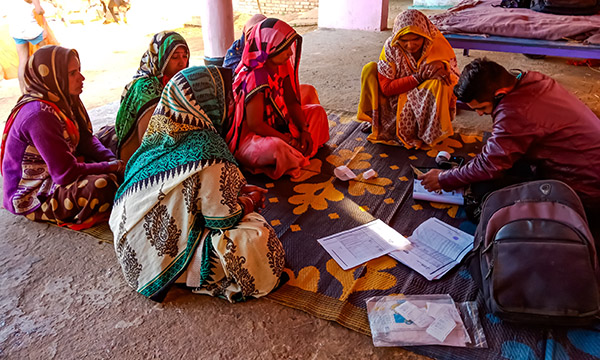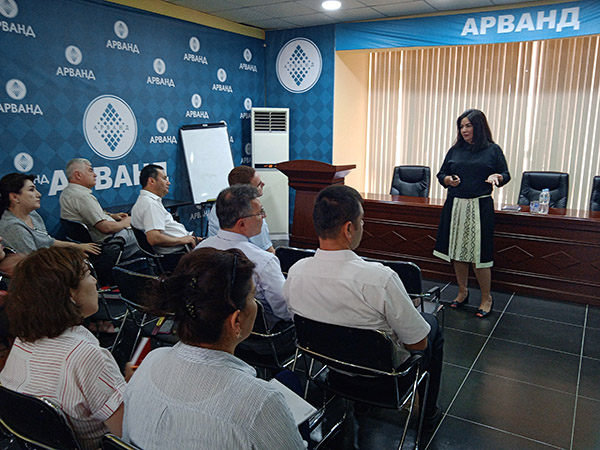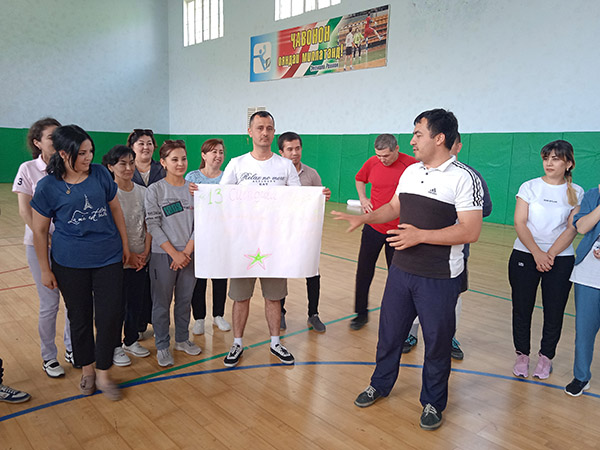In September of this year, the European Microfinance Platform published the results of a survey that mapped Human Resource Development (HRD) Practices in the Microfinance Sector and highlighted opportunities for acting on those results. This blog is the second in a series of thematic case studies which explore the actions that some survey participants have taken to address each area. The profiled institutions were selected based on the quality of their HR practices and their willingness to share experiences. We are extremely grateful for their time and effort to contribute to this important research.
 Not long ago, when an MFI was asked how it evaluates the cost-effectiveness of its HR investments, there was a pretty good chance that it would reply by describing its process for assessing participant satisfaction with its training courses. Much has changed in the last few years. There is greater awareness of the multiple channels through which capacity can be built. There is increasing desire to compare the costs and benefits of different options. And there’s more understanding of the range of investments that can support effective talent management – from recruitment tools to retention systems.
Not long ago, when an MFI was asked how it evaluates the cost-effectiveness of its HR investments, there was a pretty good chance that it would reply by describing its process for assessing participant satisfaction with its training courses. Much has changed in the last few years. There is greater awareness of the multiple channels through which capacity can be built. There is increasing desire to compare the costs and benefits of different options. And there’s more understanding of the range of investments that can support effective talent management – from recruitment tools to retention systems.
There is so much more measurement that could be done, but what do MFIs find worthwhile? What are they actually measuring – and how are they measuring it?
How much does HRD cost?
Working out the cost of HRD initiatives used to be the easy part. When HRD meant training, MFIs could easily see and calculate the direct costs of curriculum development or purchase, the salary or consulting fee of the facilitators, logistics like food, transport, and facility rental, etc. Sometimes, the opportunity cost of having employees in the training room instead of at their desk or in the field was also considered.
Today, the costs of an HRD initiative are much more likely to be hidden, hard to quantify, or difficult to attribute to a specific event. For example, how much of the cost of a Microsoft Teams license should be included in the budget for a new coaching program?
For the most part, the MFIs in these case studies are not trying to calculate the costs of individual HRD initiatives. They’re looking at the gaps in expertise or performance that need to be filled to implement their business strategy and they’re making plans to fill those gaps with existing resources (typically, the labor of existing staff and the digital tools that are being shared across operational and administrative functions). If new investments are needed (in additional tools or people), they are financed by a budget that is designed to produce a level of performance that can support that expenditure. MFIs measure whether their budget achieves its goals, and they measure variances in actual vs. planned expenditure, but they don’t try to measure the contribution of each budget component unless the plan fails to achieve its objectives.
Within HRD initiatives, however, two costs are commonly measured. One is the cost of comparative inputs (for example, the licence fee for different brands of software that meet the same need, the salary demands of two candidates for an open IT position, or the time required). The other is the cost of comparative processes (for example, using electronic versus paper contracts, or recruiting new employees through referrals versus educational institutions).
Turnover and retention
 As mentioned in the first blog in this series, case study MFIs are measuring the cost of turnover together with the frequency of turnover to determine appropriate levels of investment in HRD. Typically, the cost savings from a reduction in turnover (or an increase in retention) is compared to the cost of an HRD initiative to determine if it was worthwhile. All but one of the case study MFIs measures the rate of employee turnover at least once per year.
As mentioned in the first blog in this series, case study MFIs are measuring the cost of turnover together with the frequency of turnover to determine appropriate levels of investment in HRD. Typically, the cost savings from a reduction in turnover (or an increase in retention) is compared to the cost of an HRD initiative to determine if it was worthwhile. All but one of the case study MFIs measures the rate of employee turnover at least once per year.
Typically, turnover is highest during the initial period of employment, so the interviewed MFIs focused on how they have used these indicators to develop more cost-effective recruitment and onboarding processes.
FINCA Guatemala used to invest heavily in new recruits, bringing them to the main office for weeks of training and introduction to the organization’s policies and culture, but over the last two years, it moved most of its onboarding to the branch level, taking advantage of e-learning and virtual meetings to connect new recruits to the organization in the early stages. It also introduced a two-month certification program, at the end of which participants must pass a test before they can be hired permanently.
Mutuelle pour le Développement à la Base (MDB) in Benin created a multiple-stage recruitment process that pays candidates a flat rate to cover travel and other expenses during the initial training period. Then, when there’s a need for new employees, it offers the best performing trainees a six-month work placement with remuneration that is somewhat less than that of a full-fledged employee. Interns that meet MBD’s requirements by the end of the placement are offered a fixed-term contract and a full salary.
Bank Arvand in Tajikistan recruits new employees from its pool of agents, who are responsible for recruiting new customers and are paid on a commission basis. Crystal in Georgia has introduced an internship process that is focused on rural areas, where unemployment is higher and where the institution can contribute to Sustainable Development Goal #4. Interns that don’t get hired still benefit from the knowledge and skills developed during the period.
Engagement
 Although turnover and retention rates are easy to measure and are commonly used, an increasing number of MFIs prefer to measure the effectiveness of HRD initiatives using employee satisfaction or engagement indicators. There seem to be two main reasons for this.
Although turnover and retention rates are easy to measure and are commonly used, an increasing number of MFIs prefer to measure the effectiveness of HRD initiatives using employee satisfaction or engagement indicators. There seem to be two main reasons for this.
First, turnover and retention rates don’t measure how committed people are, why they are loyal, or what motivates and demotivates them in their relationship with an MFI. Engagement indicators allow MFIs to assess how an HRD investment affects the degree of commitment or motivation, and not just the decision to stay or go. Second, when they’re monitored regularly, engagement indicators can help MFIs identify when commitment or motivation is weakening and respond proactively – before turnover increases.
Four of the seven case study MFIs regularly conduct employee surveys. Bank Arvand follows an approach that is similar to the Gallup Q. The MFI used to have a much longer survey but found it difficult to complete and to analyze. VisionFund International (VFI)’s annual employee survey (known internally as OurVoice) evaluates satisfaction across 10 categories, including alignment and understanding of the strategy and perception of local leadership, staff care and engagement. It is anonymous and confidential and allows for open questions, the responses to which can be organized by keyword and topic for easier analysis and the definition of action plans.
Both Bank Arvand and VFI segment their survey results (e.g., by functional area, gender, tenure), which helps them to understand the needs of different employee groups, identify root causes, and respond.
Performance and behavior
Among case study MFIs, the most common way to measure the effectiveness of an HR investment is to assess whether people achieved the goal or target that the HR initiative was designed to facilitate.
MDB provided the quintessential example: it wanted to lower the delinquency of its loan portfolio to a specific level, so it designed a training to achieve that goal and measured whether or not delinquency fell to that level.
Typically, there are macro-level goals that HR investments are expected to contribute to, and there are project-specific goals that gauge whether an HR investment accomplishes what it is supposed to influence macro-level performance. For example, the effectiveness of a leadership development project at FINCA Guatemala was measured by the extent to which scores on specific questions of the semi-annual climate survey improved, and by whether the organization met its goals for increasing portfolio size and decreasing turnover.
Sometimes it makes more sense to measure the change in an attitude or behavior rather than a key performance indicator because the attitude or behavior is affecting performance in multiple areas. One of the indicators FINCA Guatemala measured, for instance, was employees’ response to the question, “Do you trust your manager?”
Influence
Sometimes, what drives the cost-effectiveness of an HR initiative is not the content or the cost, but rather, the influence of the person or organization delivering the content. This is something that some MFIs measure before embarking on an HRD initiative – or before contracting someone to implement it – to increase the likelihood that it will be worthwhile. FINCA Guatemala’s CEO, Fermin Sanchez, made this point when discussing how his organization chooses between internal and external service providers. “We first look internally to see if there is someone who not only has the ability but will also have the influence for others to follow. Sometimes there are people who have the knowledge, but they don't connect to the personnel, and that is not good enough.”
The role of technology
Technology is playing an increasingly important role in helping MFIs measure both costs and effectiveness. It is also helping organizations improve the cost-effectiveness of their HR processes. MFIs gave dozens of examples of digitalization initiatives that have reduced costs and/or made HR functions easier. Employee self-service apps are making it easy for employees to request leave and track their compensation. Electronic signing is reducing the use of paper and express mail services. Less time is spent on reporting. Responses are sent and received more quickly. Fewer mistakes are being made. Online learning platforms make training cheaper and more flexible.
As more information is collected electronically, there are more opportunities to use that data to monitor performance in real time, to analyze that performance against business priorities, to identify gaps in individual and team capabilities, to assess strengths and weaknesses in workplace learning tools, to find and reengineer time-consuming HR processes, to understand what is motivating and demotivating engagement – and to make decisions that are informed by that data.
Momentum is building among decision-makers in the interviewed MFIs. “We need to take more decisions based on data” says Mr. Sanchez. “It’s not enough to have a feeling that something needs attention,” echoes Salome Kvakhadze, Head of Talent Development and Management at Crystal. “We need to know what it is that needs attention, so we can design a relevant intervention and measure its effectiveness.” She believes digitalization is a critical tool: “Manual data is past data. That’s why we were more reactive rather than proactive. We want to be proactive.”
Of course, the gains that technology facilitates come at a cost. Often, but not always, that cost is considerable. Case study MFIs are meeting many of their communication and collaboration needs through platforms and apps that are not fee-based: for example, Zoom, Google Meet, WhatsApp, SurveyMonkey, and Google Forms. Holding companies like ASKI and networks like FINCA and VisionFund are building technology infrastructure for the benefit of all members. There are tremendous economies of scale and expertise in this approach.
Organizations that cannot leverage the IT infrastructure or talent of an association may find it more cost-effective to purchase licenses to use existing technology solutions rather than try to develop solutions in-house. Bank Arvand uses a licensed program for its appraisal system. ASKI in the Philippines pays a subscription for their employee mobile app (Elstaff), and also for Google Classroom and Zoom based on how many people need to be trained. Several of the interviewed MFIs pay for a commercial Microsoft Teams license because of the confidentiality it provides.
Case study MFIs recognized that major HR investments, such as an internal learning management system (LMS) or the integration of administrative, learning, and performance management systems, only make sense if they’re integral to an organization’s business strategy. They also warn that the return will not be immediate. “It takes time,” says Nancy Camey, People and Culture Manager at VisionFund Guatemala.
Photos 2 and 3 above: Bank Arvand, Tajikistan


Leave a comment